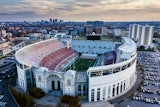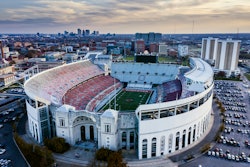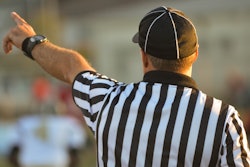Seven-year-old Thomas Vasquez has been upgraded from critical condition to good, while the condition of his 6-year-old playmate remains unknown, after the pair nearly drowned in a Dallas swimming pool earlier this week. The two boys were on a church field trip Tuesday with 55 other children at Samuell-Grand Park swimming pool and playing a game to see who could hold their breath underwater longer, officials say, which could have led to shallow water blackout.
Frank Librio, a spokesman for the City of Dallas, told WFAA.com that four lifeguards and a pool manager were on duty at the pool at the time of the incident. An American Red Cross lifeguard trainer also was present, and she administered CPR. It is unclear exactly how long the boys were beneath the surface.
"The children weren't underwater long," Dallas Police Sgt. Brenda Nichols told NBCDFW.com. "The lifeguards observed them, and once they observed them, they dove in [and] they got the children up and to the hospital. There were several lifeguards, and apparently the church group had one adult per every 10 children as well, so I'd say the children were well-supervised, but children will be children."
But shallow water blackout - a largely unknown and potentially fatal condition that occurs when an insufficient amount of carbon dioxide is available to activate the body's natural impulse to breathe - affects people of all ages. In 2011, a 16-year-old New Zealander, two 21-year-old men in Staten Island, N.Y., and a 43-year-old father of three in Maine were among shallow water blackout's victims.
"The problem with these easily preventable tragedies is that everyone at the swimming pool should have known the dangers of competitive breath-holding in the water, and should have stopped it," says Tom Griffiths, president of the State College, Pa.-based Aquatic Safety Research Group, who began warning of SWB dangers 30 years ago. "Rules, regulations and aggressive signage banning breath-holding should have supplemented their supervision, as well."
Griffiths calls SWB "the leading cause of drowning for those who already know how to swim," and he and the Norcross, Ga.-based nonprofit education and awareness organization Shallow Water Blackout Prevention are pushing for mandatory signage at all aquatic facilities prohibiting underwater training and long breath-holding.
By hyperventilating prior to submersion, an individual blows off an excessive amount of carbon dioxide and can, in the process, surrender his or her breathing reflex. When the oxygen level in the blood runs low enough, that person loses consciousness. He or she never actually feels the need to breathe underwater and sometimes even experiences euphoria. A series of events - including water inhalation, possible convulsions and ultimately cardiac arrest and death - follows. Unlike regular drowning, which can take six to eight minutes before brain damage and death occur, SWB can kill within two and a half minutes, experts say.
On Tuesday, the day of the incident involving the two Dallas boys, the U.S. Centers for Disease Control and Prevention issued drowning-prevention warnings, including a specific caution against hyperventilating: "Swimmers should never hyperventilate before swimming underwater or try to hold their breath for long periods of time. This can cause them to pass out (sometimes called 'shallow water blackout') and drown."




































